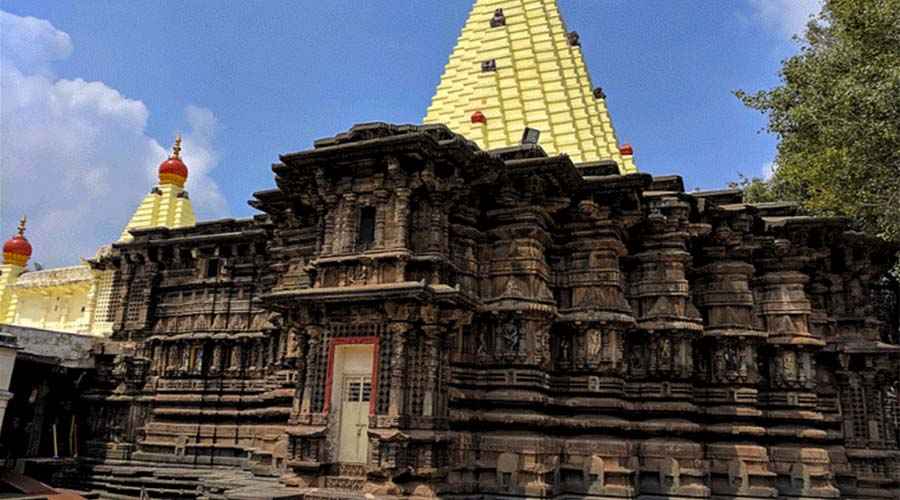In the spiritually rich heartland of India, nestled on Mandhata Island in the sacred flow of the Narmada River, stands the revered Omkareshwar Temple. Located in Madhya Pradesh, this temple is one of the twelve revered Jyotirlingas dedicated to Lord Shiva, embodying immense religious significance for millions of devotees. The temple’s unique island setting, profound legends, remarkable architectural beauty, and spiritual atmosphere make it a jewel in India’s sacred geography.
Mythological and Historical Background
The origins of Omkareshwar Temple are steeped in myth and legend, adding a mystical charm to its physical beauty. The island itself is naturally shaped like the sacred symbol “Om” (ॐ), which is considered the primordial sound of creation and a symbol of the Supreme. According to Hindu mythology, the Vindhya Mountain once meditated upon Lord Shiva with intense devotion to atone for past mistakes. Moved by his devotion, Shiva appeared in the form of a Jyotirlinga on this island, divided into two parts — Omkareshwar and Mamleshwar, the two Shiva lingams worshipped here.
Another legend speaks of King Mandhata, an ancestor of Lord Rama from the Ikshvaku dynasty, who performed severe penance on this island. Pleased with his devotion, Lord Shiva manifested here as the Jyotirlinga Omkareshwar, blessing the king and consecrating the island forever.
Historically, the temple is believed to have been built by the Paramara kings of Malwa in the 11th century CE. The temple complex saw periods of patronage and renovations under several rulers including the Chauhans and later the Holkar dynasty during the 18th and 19th centuries, particularly under Rani Ahilyabai Holkar, who is credited with revitalizing the temple to its present glory. Despite facing invasions and loot during the medieval period, the structure survived with much of its mantle intact, continuing to welcome seekers and devotees.
Architectural Marvel: A Blend of Styles and Spiritual Symbolism
Omkareshwar Temple is a magnificent specimen of Nagara-style Hindu temple architecture with influences from other regional designs. The complex sprawls across the Mandhata Island, which covers nearly 2.6 square kilometers. It features a five-story main temple structure that captivates visitors with its intricate carvings, detailed sculptures, and imposing presence.
Key Architectural Features:
- Garbhagriha (Sanctum Sanctorum): The innermost chamber houses the revered Jyotirlinga. One fascinating peculiarity is that the Jyotirlinga is partially immersed in water from the Narmada River, providing a unique spiritual ambiance. Also, unlike typical temple designs, the sanctum and the main deity are not aligned directly with the temple’s main door or towering spire, reflecting the temple’s ancient architectural layers.
- Mandapas (Pillared Halls): The temple features large congregational halls supported by ornate pillars, each carved with mythological scenes, floral motifs, and geometric patterns. These pillars and halls aid in ceremonial gatherings and rituals.
- Shikharas (Spire Towers): Soaring spires with curvilinear designs symbolize a spiritual axis connecting earth and heaven. These spires are richly adorned with carvings depicting gods, goddesses, and celestial beings, which showcase the artistic mastery of regional artisans.
- Multiple Floors and Shrines: The temple has five floors, each dedicated to different deities besides Shiva, including Mahakaleshwar, Siddhanath, Gupteshwar, and the flag deity at the top. The temple complex also houses shrines for Panchamukhi Ganesha, Annapurna Devi, Lord Krishna, Devi Narmada, and Lord Shani, making it an inclusive sanctuary of diverse Hindu worship practices.
The Spiritual Significance of Location
The island itself, called Mandhata or Shivpuri, is enveloped by the sacred Narmada River, one of India’s seven holy rivers. The flowing waters around the temple are central to ritualistic cleansing and spiritual purification for devotees. Bathing in the Narmada before entering the temple is considered especially auspicious.
The temple’s setting on the Om-shaped island is profoundly symbolic. The sacred syllable Om stands for the ultimate reality and the cosmic sound from which the universe originated. This natural formation embodies the interconnectedness of earth, water, and spirit, inviting pilgrims into a space that feels simultaneously physical and metaphysical.
Rituals, Festivals, and Devotion
The Omkareshwar Temple has vibrant religious life with rituals performed multiple times daily. The three primary daily worships are conducted by priests from the temple trust, the Scindia family, and the Holkar family, maintaining continuity of tradition and sanctity.
The temple becomes a hub of activity during the festival of Maha Shivaratri, dedicated to Lord Shiva. On this night, devotees fast, chant hymns, and participate in all-night vigils, celebrating Shiva’s cosmic energy and seeking his blessings. Special abhishekam (ritual bathing) of the Jyotirlinga with milk, honey, and water attracts millions of pilgrims.
Other popular celebrations include daily aartis, the Narmada Parikrama along the river banks, and various festivals honoring local deities and saints, all reinforcing the temple’s role as a living center of faith and culture.
Preserving the Sacred Legacy
The Archaeological Survey of India (ASI) along with state authorities oversee the conservation and maintenance of the Omkareshwar Temple, ensuring that its architectural integrity and religious significance endure through the ages. Conservation efforts are balanced with sustainable tourism to allow pilgrims and visitors to experience the sanctity without compromising the temple’s delicate environment.
The temple’s accessibility via bridges and boats adds to the serene pilgrimage experience, allowing visitors a chance to approach the shrine enveloped by nature and spirituality.
Conclusion
The Omkareshwar Temple is more than a place of worship; it is a spiritual ecosystem where myth, history, nature, and devotion merge harmoniously. Perched on the sacred Om-shaped island in the holy Narmada River, the temple invites seekers to immerse themselves in the cosmic rhythm symbolized by Lord Shiva’s Jyotirlinga.
Its fascinating history, stunning Nagara architecture, and deeply rooted religious practices continue to inspire awe among pilgrims from across India and the world. Visitors leave the temple not only with blessings but with a deepened sense of connection to the infinite — the timeless dance of Shiva that lies at the heart of creation itself.
In essence, Omkareshwar is a sanctified path—an earthly embodiment of divine continuity, where the eternal sound Om reverberates through stone, water, and soul.


